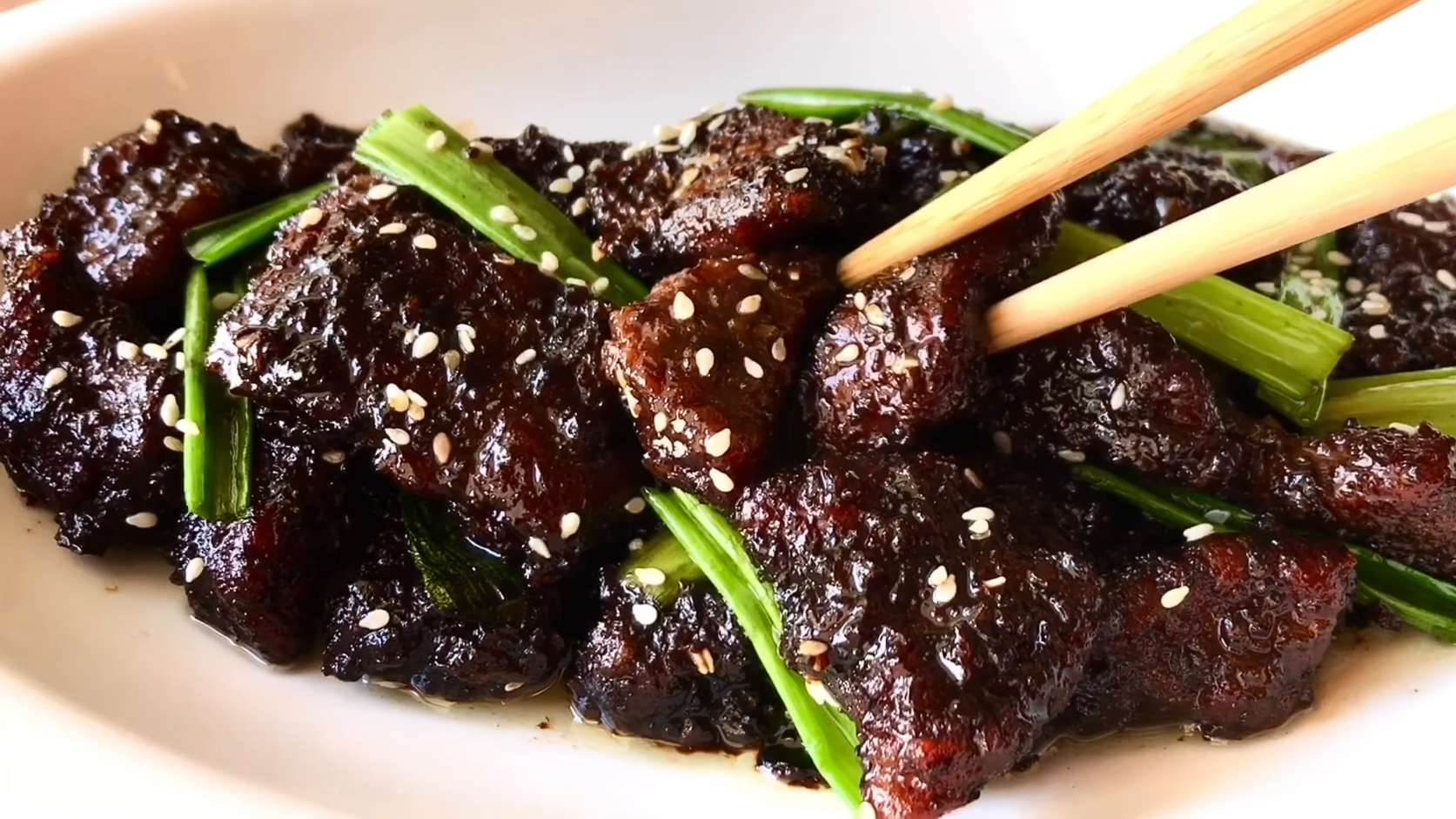Mongolian Beef: A Flavorful Stir-Fry Classic You Can Master at Home
Mongolian Beef is one of those dishes that hits every craving. It’s tender, thinly sliced beef coated in a rich, savory-sweet sauce with just the right balance of soy, garlic, ginger, and brown sugar. The dish is quick to make and comes together with simple ingredients, making it a perfect weeknight dinner or an impressive meal to serve friends.
While Mongolian Beef is often associated with Chinese takeout menus, the origins are a bit murky. The dish is actually inspired by American-Chinese cuisine rather than traditional Mongolian cooking. Regardless of where it came from, it remains wildly popular for good reason. The sauce is addictive, the beef is juicy, and the dish is easy to pair with rice or steamed vegetables.
If you’ve ever wanted to make Mongolian Beef at home but were intimidated by stir-frying or feared your sauce wouldn’t measure up, this guide will walk you through every step. From picking the right cut of beef and prepping ingredients, to mastering the sauce and stir-fry technique, you’ll have all the tips and tricks to recreate this classic in your own kitchen.
Let’s dive in.
Why Make Mongolian Beef at Home?
Ordering takeout Mongolian Beef is always tempting, but making it at home gives you more control over ingredients and flavor. Plus, it’s surprisingly fast and straightforward. When you make it yourself, you can:
- Use higher quality beef or leaner cuts
- Adjust the sweetness and saltiness to your taste
- Skip preservatives and control sodium levels
- Customize with vegetables or extra aromatics
- Save money and have fun cooking!
Most importantly, home cooking means you get it fresh and hot — the crispy edges on the beef and glossy sauce won’t lose their charm sitting in a takeout container.
Ingredients for Mongolian Beef
Before cooking, gather these ingredients. They are simple, affordable, and usually available in most kitchens.
For the Beef and Marinade:
- 1 pound flank steak or sirloin, thinly sliced against the grain
Flank steak is flavorful and tender when sliced thin. - 2 tablespoons cornstarch
For coating the beef and creating a slight crust. - 2 tablespoons vegetable oil
For frying.
For the Sauce:
- ½ cup low sodium soy sauce
The backbone of the sauce’s salty, umami flavor. - ½ cup water
To dilute and add moisture. - ⅓ cup dark brown sugar (packed)
Adds sweetness and caramel notes. - 1 tablespoon hoisin sauce (optional)
Adds complexity and a slight tang.
Aromatics and Flavor Enhancers:
- 3 cloves garlic, minced
Garlic is essential for depth. - 1 tablespoon fresh ginger, grated
Adds warmth and brightness. - 2 green onions, sliced thinly (plus more for garnish)
Green onions add freshness and a slight crunch. - Red chili flakes or fresh chili (optional, to taste)
For a little heat if desired.
Optional Vegetables to Add:
- Sliced bell peppers
- Broccoli florets
- Snap peas
Equipment Needed
- Sharp knife and cutting board
- Large skillet or wok
- Mixing bowls
- Measuring cups and spoons
- Spatula or wooden spoon
Step-by-Step Instructions for Mongolian Beef
Step 1: Prepare the Beef
Start by trimming any excess fat or silver skin from the flank steak. For the best texture, slice the beef thinly — about 1/8 to 1/4 inch thick — against the grain. Slicing against the grain shortens muscle fibers, making the beef more tender.
Once sliced, place the beef in a mixing bowl and toss with the cornstarch until each piece is lightly coated. This cornstarch coating will help the beef get that coveted slightly crispy edge when cooked, and it also helps thicken the sauce later.
Step 2: Mix the Sauce
In a separate bowl, combine the soy sauce, water, dark brown sugar, and hoisin sauce if using. Stir well to dissolve the sugar. Set aside.
Step 3: Heat the Pan and Cook the Beef
Heat a large skillet or wok over medium-high heat and add the vegetable oil. When the oil is hot but not smoking, add the beef in a single layer. Do this in batches if necessary to avoid overcrowding the pan, which can cause steaming rather than searing.
Cook the beef without stirring for 2-3 minutes to get a nice sear on one side, then stir or flip to cook for another 1-2 minutes until browned but not fully cooked through. Remove the beef from the pan and set aside.
Step 4: Cook Aromatics
In the same pan, add a touch more oil if needed. Add the minced garlic and grated ginger, stirring constantly to avoid burning. Cook for about 30 seconds or until fragrant.
Step 5: Make the Sauce and Combine
Pour the prepared sauce mixture into the pan with the garlic and ginger. Bring it to a gentle simmer. The sauce will start to thicken as the brown sugar caramelizes.
Return the cooked beef to the pan along with the sliced green onions. Toss everything together, coating the beef thoroughly in the sticky sauce. Cook for another 2-3 minutes until the beef is fully cooked and the sauce has thickened to your liking.
Step 6: Add Optional Vegetables
If you want to add vegetables, stir-fry them separately or steam lightly so they retain some crunch. Then mix them in with the beef at the end or serve on the side.
Step 7: Garnish and Serve
Transfer your Mongolian Beef to a serving dish and garnish with additional sliced green onions. Serve immediately with steamed white rice, fried rice, or noodles.
Tips and Tricks for Perfect Mongolian Beef
1. Choose the Right Cut of Beef
Flank steak is classic because it’s affordable and flavorful. Sirloin or skirt steak also works well. Avoid tougher cuts like chuck roast unless you slice very thin and marinate well.
2. Slice Beef Thinly and Against the Grain
This makes a huge difference in tenderness. A sharp knife helps, or you can freeze the meat for 20-30 minutes to firm it up before slicing.
3. Don’t Overcrowd the Pan
Overcrowding causes the beef to steam instead of sear. Cook in batches to get that desirable caramelized crust.
4. Adjust Sweetness and Saltiness
Taste your sauce before adding it to the pan. Adjust sugar or soy sauce to fit your preference. Some like it sweeter, others saltier.
5. Add Vegetables for Color and Nutrition
Bell peppers, broccoli, or snap peas add vibrant color and crunch that complements the tender beef.
6. Use Fresh Garlic and Ginger
Fresh aromatics give the sauce brightness and depth that powders or pastes can’t match.
7. Keep Sauce Thick and Glossy
Cornstarch from the beef coating plus the sugar in the sauce helps create that sticky texture. Let the sauce simmer gently until it thickens.
8. Serve Immediately
Mongolian Beef tastes best fresh and hot. The sauce will soak into the beef if left too long and the crispiness will diminish.
Variations You Can Try
- Spicy Mongolian Beef: Add fresh sliced chili or more chili flakes for heat. You can also drizzle sriracha on top when serving.
- Mongolian Beef Lettuce Wraps: Serve the beef in crisp lettuce cups for a fresh handheld version.
- Slow Cooker Mongolian Beef: For convenience, you can cook the beef in a slow cooker but you will miss the crisp edges. Add the sauce and beef, then cook on low for 4 hours.
- Add Mushrooms or Water Chestnuts: For added texture and flavor.
Frequently Asked Questions
Can I use frozen beef?
Yes, but thaw it fully and pat dry before slicing and cooking.
Is Mongolian Beef gluten-free?
Not traditionally because soy sauce contains gluten. Use tamari or gluten-free soy sauce to make it gluten-free.
Can I make this recipe vegetarian?
Try substituting tofu or seitan for the beef and adjust cooking time accordingly.
How long can leftovers be stored?
Store in an airtight container in the fridge for up to 3 days. Reheat gently in a skillet to keep texture.
Conclusion
Mongolian Beef is a perfect blend of sweet, savory, and slightly spicy flavors, with tender beef and a glossy, sticky sauce that keeps you coming back for more. Making this dish at home is easier than you think, and the results are worth the effort.
By following this recipe, you can enjoy restaurant-quality Mongolian Beef any night of the week. Whether you keep it simple or add your favorite vegetables, it’s a crowd-pleaser that fits into any meal plan.
Remember to slice your beef thin, keep the pan hot, and get that sauce just right. Serve over rice or noodles and watch your family and friends dig in with smiles.
Give it a try and let me know how your Mongolian Beef turns out!

